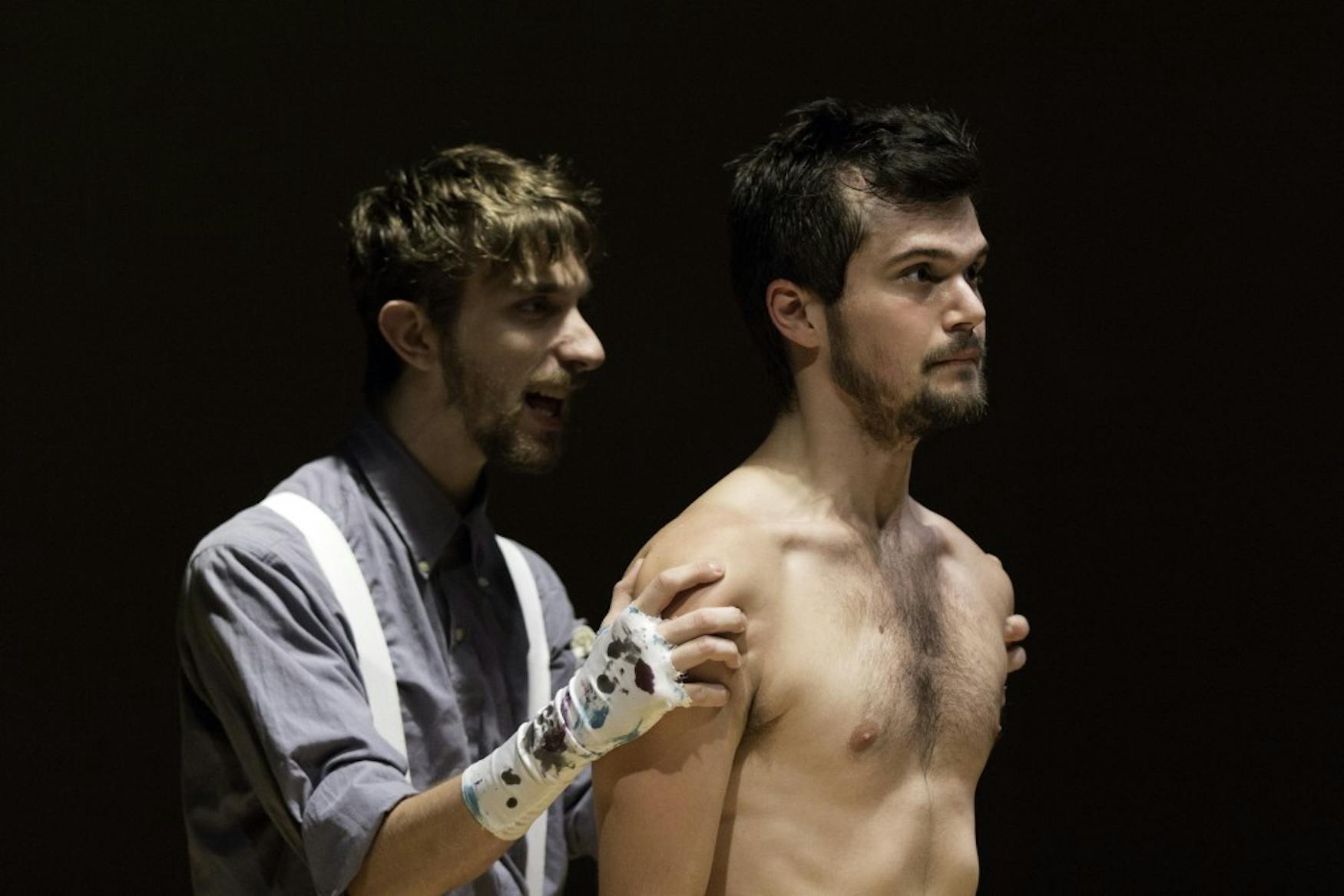‘Woyzeck’ leaves viewers haunted
REVIEW — “Woyzeck” was an outstanding show performed in Merrick Theater in Spingold Theater Center. The story followed a man named Woyzeck who was on a strict pea-only diet. His new diet, along with his wife talking to a drum major, started to cause Woyzeck to lose his mind. When the audience walked into Merrick Theater, you sat against the wall across from the doors. This was an interesting choice, as theaters are usually set up with chairs at the back and the stage set up in front of the audience, toward the doors. I soon realized it was a strategic choice made by director Raphael Stigliano ’18, as the walkway above the theater was used as an important set space. The audience sat down, not quite knowing what they should expect from the performance.
The play started with Karina Wen ’20 talking to the audience as Woyzeck (Dan Souza ’19) and Marie (Gabi Nail ’18) danced in front of Wen. Wen played multiple roles, and when playing the narrative role, she spoke and engaged the audience with her words and questions. Once the dance ended, Woyzeck left the stage, and Marie sang a sad song to her baby, echoing the narration at the start of the play. Even though the song itself was sad, Nail sang it with such beauty that it sounded like a soft and effortless whisper. As Marie left, Woyzeck reappeared.
Woyzeck came off as a slightly deranged yet confused character in the storyline, with the help of an also slightly demented doctor, played by Ryan Sands ’19. Souza used the space of the room well while he expressed this mix of insanity and aloofness, sometimes shaking or seeming to spasm. The captain in the story (Sophia Massidda ’20) says, “He’s stabbing me with his eyes,” and looking at Souza in this scene, the audience may start the believe it. Really getting into the role, Souza did a fantastic job acting out not only Woyzeck’s actions, but also his expressions and his appearance down to the smallest of details.

LOVERS’ SPAT: Woyzeck stabs Marie to death intimately, lost to the insanity spurned by suspicions of her faithfulness.
Fantastic parts of the play varied from the use of the walkway above the set to the sweat dripping off Woyzeck’s face after the fight. Cast members also chattered in the background to act as voices in Woyzeck’s head. At first, I thought it distracting and confusing. However, as the play went on, it made more sense. The chatter was not overpowering to the audience, instead adding a sense of jumbled thoughts. Noise in the play, in addition to the excellent use of space, was strategically used so that it added to the performance and how the audience perceived each moment. Drum noises also created effect and added to the drum major character (Ben Astrachan ’19). In the role of the drum major, Astrachan brought in the “cartoonishly sinister” character mentioned in the director’s note. Having a wide-eyed, crazy expression on his face and a look of anticipation, Astrachan ensured that the audience couldn’t wait for what was next. Astrachan took pauses in his motions, which led the audience to look more closely at his approach to the scene. For instance, as he called to Marie, Astrachan loudly whispered her name and stood with arms wide open yet slightly shaking. Just like Souza, Astrachan portrayed the character’s insecurities and quirks.

REFLECTION: Marie (Gabi Nail ’18) admires a new pair of earrings she was gifted, doting on her reflection, played by Sophia Massidda ’20.
Bringing the play full circle, the final scene ended with the baby coming back out as in the beginning of the play and Woyzeck not being able to go to it. The audience had chills after Woyzeck kills Marie, left thinking about all of the parts leading up to this point that drove Woyzeck into doing such a deed. This ending showed how put together “Woyzeck” was and how much time must have gone into the play’s preparation. It had four shows from Friday at 8 p.m. until Sunday at 2 p.m. with free admission. It was definitely worth seeing.



Please note All comments are eligible for publication in The Justice.